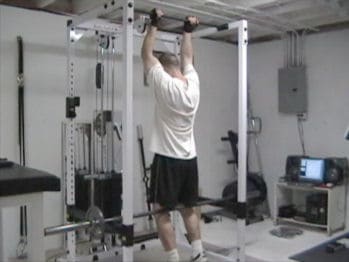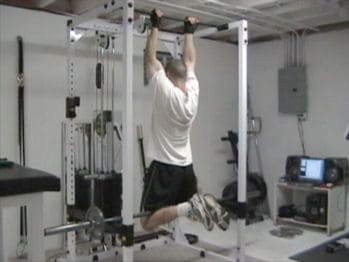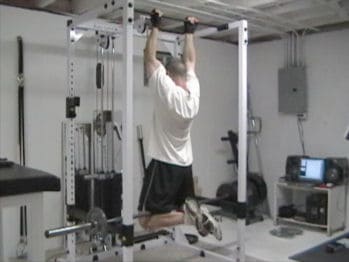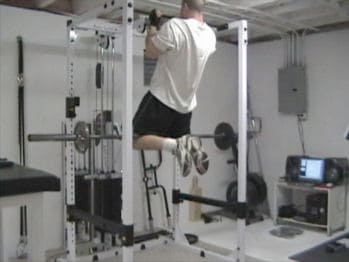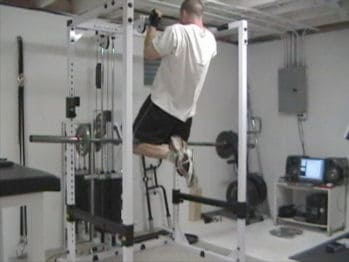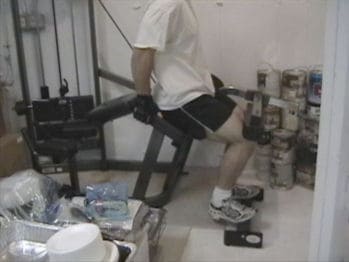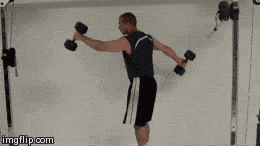Need some extra resistance for your Chin-Ups? This is a unique way to do it that adds a balance component and requires hamstring strength, making the exercise more of a total-body type of exercise.
For this, it’s easiest to use the chin-up bar in a rack. If you have a rack but it doesn’t have a chin-up bar, just set an Olympic bar on the top of the rack. That works just as well. If you don’t have either option, you’ll need a spotter to give you the barbell. This works just fine too.
Set the safety rails in the rack at knee height – here’s the trick…not knee height when you’re standing on the floor but knee height when you’re hanging from the chin-up bar!
The first time you do this exercise, start with just an empty bar. At 45 lbs, it’s not light even on it’s own! Set the bar on the safety rails, stand in front of it then hang down from the chin-up bar.
Now bend your knees and hook them underneath the bar so that you’re cradling the bar with your knees. Your leg position will look like the top of a leg curl.
At this point, you can cross your feet to lock them into position (which makes the exercise a bit easier) or you can leave them separated (which works the hamstrings more).
Keeping that bar cradled, do a chin-up from there, just as you normally would.
When doing this exercise, balance is required, so keep your knees well apart on the bar to improve your ability to control the weight.
The positioning of the bar actually allows for good body position in the chin-up, in addition to the extra resistance. Also, by forcing an isometric contraction in the hamstrings, you help to activate the muscles of the posterior chain (the muscles along the back of the body). This actually helps to increase back muscle activation.
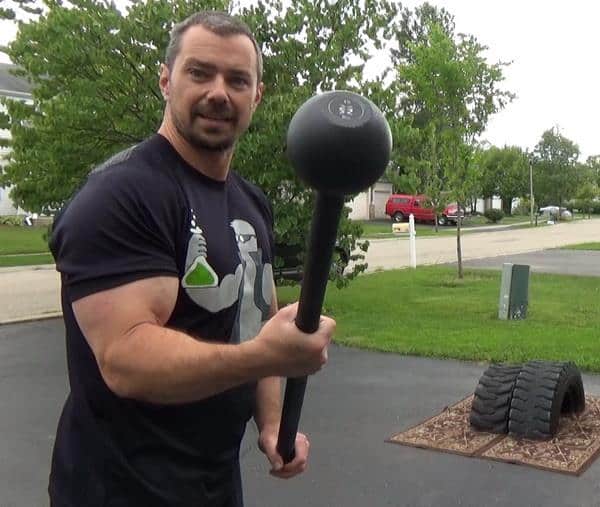
Nick Nilsson is known in the fitness industry as the “Mad Scientist of Muscle,” and for good reason! For more than 28 years, Nick has been creating unique, new exercises and training techniques and putting together some of the most innovative muscle-building and fat-loss programs available anywhere.

